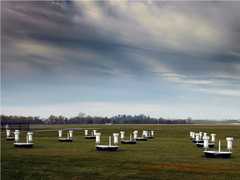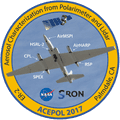The Ground-based Multiangle SpectroPolarimetric Imager (GroundMSPI) is a ground-based pushbroom imager developed by the Jet Propulsion Laboratory (JPL) and the University of Arizona. It is the ground-based version of the MSPI satellite instrument and operates similarly to its airborne counterpart (AirMSPI). GroundMSPI measures ultraviolet and visible radiance across eight spectral bands (355, 380, 445, 470, 555, 660, 865, and 935 nm). These measurements can be used to derive aerosol properties. It has a spatial resolution of 3 cm and a scan rate of 0.5 degrees per second.

Instrument Details
- Spectrometer/Radiometer
- Earth Science > Spectral/engineering > Visible Wavelengths > Visible RadianceEarth Science > Spectral/engineering > Ultraviolet Wavelengths > Ultraviolet RadianceEarth Science > Spectral/engineering > Visible WavelengthsEarth Science > Spectral/engineering > Ultraviolet Wavelengths
- Sea/Ocean/Water Surface, Land Surface
- 2 ms
- 3 cm
- 896 THz, 789 THz, 674 THz, 638 THz, 541 THz, 455 THz, 347 THz, 321 THz
- https://wp.optics.arizona.edu/rchipman/wp-content/uploads/sites/41/2016/03/MSPI-Bruchure.pdf
David Diner
David Diner
JPL, University of Arizona
NASA’s Instrument Incubator Program
 Campaign Field Sites Stationary 73 Campaigns · 172 Instruments |  Aerosol Characterization from Polarimeter and Lidar 2017 Western United States 1 Deployment · 6 Data Products
|